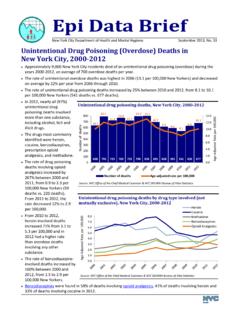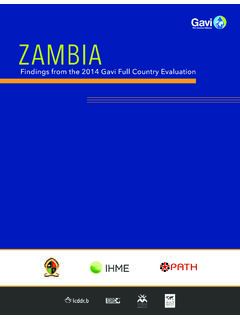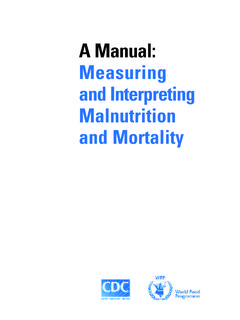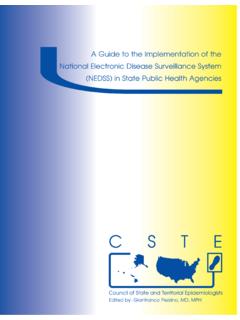Transcription of Spinal Conditioning for Athletes With Lumbar …
1 Spinal Conditioningfor Athletes with LumbarSpondylolysisand SpondylolisthesisErin Nau, ATC,1 William J. Hanney, PT, DPT, ATC, CSCS,1and Morey J. Kolber, PT, PhD, CSCS21 University of Central Florida, Orlando, Florida;2 Nova Southeastern University,Fort Lauderdale, FloridaSUMMARYLOW BACK PAIN IS A COMMONCONDITION IN ATHLETICPOPULATIONS. PARTICIPATION INATHLETICS HAS BEEN LINKED TOSPECIFIC ANATOMICAL CHANGESTO THE LUMBER SPINE(SPONDYLOLYSIS ANDSPONDYLOLISTHESIS). PRACTICALGUIDELINES FOR STRENGTH ANDCONDITIONING PROFESSIONALSSHOULD RECOGNIZE THEBIOMECHANICAL STRESSESASSOCIATED with ATHLETICPARTICIPATION IN THISPOPULATION. PROGRAMMODIFICATIONS CAN BE MADE INATHLETES with SPONDYLOLITICDISORDERS. CONDITIONINGROUTINES SHOULD EMPHASIZESPINAL STABILIZATION ANDSPORT-SPECIFIC FLEXIBILITY. THISARTICLE MAKES RECOMMENDA-TIONS FOR Athletes WITHSPONDYLOLITIC DISORDERS THATSHOULD ALLOW PARTICIPATION INLUMBAR Conditioning WHILEPROTECTING THE BACK FROMUNDUE back pain (LBP) is a preva-lent condition in the athleticpopulation (10,19).
2 Amongathletes, LBP accounts for up to 40%of documented injuries (2,9,25). Al-though LBP is not the most frequentdisorder encountered among the ath-letic population, it is one of the mostchallenging to treat, perhaps as a resultof training demands. Although theetiology of LBP is multifactorial, epi-demiological data have suggested thatathletes are more prone to degenera-tive and spondylolytic related injurieswhen compared with the generalpopulation (2,5,8,10,13,16,26). Thepurpose of this article is to presenta brief overview of spondylolitic dis-orders and to provide a comprehensivespinal- Conditioning program designedto achieve the dual benefit of improvedspinal Conditioning while protectingthe spondylolitic region from disorders among athletestypically comprise the diagnosis ofeither a spondylolysis or a spondylolis-thesis. The term spondylolisthesiscomes from the derivative of spondy-lo, which means vertebrae, and lis-thesis which means forward slippage(34).
3 Therefore, a spondylolisthesis isessentially a forward slippage of onevertebra on another (Figure 1) (10,34).Spondylolisthesis often are attributedto degenerative changes and/or a de-fect at the vertebrae (3,35). A spondy-lolysis occurs when there is a fracture,found in a region of the vertebrae calledthe pars interarticularis (Figure 2) (25).A spondylolysis disorder does notimply a forward slippage of the verte-bra (33). Spondylolysis defects may beunilateral or bilateral and may progressto a spondylolisthesis over time (13).Researchers have indicated that ath-letes with a unilateral spondylolysismay be at risk for developing a fractureof the contralateral pars interarticularis(27). For the purpose of clarity, we willrefer to spondylolysis and spondylolis-thesis conditions collectively as spon-dylolitic disorders. Where necessary,a distinction will be ANDPRECIPITATING FACTORSAs stated previously, Athletes are moreprone to degenerative and spondylo-lytic-related injuries when comparedwith the general population (2,5,8,10,13,16,26).
4 Spondylolitic disorders areprimary causes of back pain amonggymnasts, divers, weightlifters, wres-tlers, and football players, with a re-ported prevalence of up to 40% (2,15).Within individual sports, the great-est incidence is found in gymnasts,weightlifters, rowing, and those whoparticipate in throwing sports (14).KEY WORDS:low back pain; spondylosis; spondylol-ysis; spondylolisthesis; athletic injury National Strength and Conditioning AssociationStrength and Conditioning Journal | explanation for gymnasts having ahigh incidence lies in the demandsplaced on his or her spine while inpositions that load the pars interarticu-laris. It has been estimated the spine of agymnast is loaded approximately 4times the amount in that of the generalfemale population (15,23). Conse-quently, the incidence of spondyloliticdisorders has been approximated at11% among female competitive gym-nasts (15,23). Gender also plays a role,as spondylolitic disorders are 4 timesmore common in women than men(7).
5 Age may also be a factor to con-sider as vertebral slippage is shown tooccur more drastically during an ado-lescent growth spurt, and if the athletewas asymptomatic to begin with , theproblem potential becomes all themore accentuated (29). It has beensuggested, although not universallyagreed upon, that in the skeletallyimmature athlete, spondylolitic disor-ders should be considered until diag-nostic testing suggests otherwise (33).DIAGNOSISA thletes with spondylolitic disordersmay present with a wide range of signsand symptoms, making clinical diag-nosis elusive. Although a detailed dis-cussion of the diagnostic signs andsymptoms is beyond the scope of thisarticle, a brief overview is athlete s history leading to injuryis often inclusive of repetitive loadinginto extension, flexion, twisting, or acombination of movements (4). Plainfilm radiographs possess the diagnosticutility to identify spondylolytic disor-ders using standard views; however,more sensitive imaging modalities,such as a technetium bone scan, maybe required in certain cases (25).
6 Incases of a spondylolisthesis, radio-graphs are able to provide informationon the severity of the slip. A slip ofless than 50% is considered mild andoften managed conservatively, whereasslips of greater than 50% are oftenreferred for a surgical consult (25).Ultimately, the diagnosis of a spondy-lolytic disorder will be made bya physician who has interpreted theradiological and clinical , individuals diagnosed withspondylolytic disorders must be clearedby their physician prior to the initiationof any exercise our intent is not to providean exhaustive discussion of the lumbaranatomy, a brief review is necessaryFigure ( Primal Pictures Ltd.)Figure ( Primal Pictures Ltd.)VOLUME 30 | NUMBER 2 | APRIL 200844 Spinal Conditioning for Lumbar Spondylolysisand Spondylolisthesisto establish a clear understanding ofthe information presented. The lum-bar spine consists of 5 vertebrae, andbetween each lies a disk providingcushion between the vertebrae whenloaded.
7 The joints of the Lumbar spineare referred to as facet joints (Figure 3).A facet is a small smooth area ona bone that creates an articulationbetween neighboring vertebrae (34).Each vertebra contains 2 superior and2 inferior articular facets providinga connection to the adjoining vertebraabove and below (25). Between thesuperior and inferior facet lies a small,very thin area of primarily corticalbone called the pars interarticulariswhich is illustrated in Figures 1 and 2(34). The pars interarticularis is theweakest area in this unit, and in youngpeople it is particularly thin and injurysusceptible (5). Because of its fragilenature, the pars interarticularis issometimes not capable of withstandingexcessive or repetitive forces; thus,it fractures (25). Defects or fracturesleading to spondylolitic disorders willinvariably originate at the pars inter-articularis. Although this disruptioncan occur at any vertebral level, itmost commonly occurs at the L5 seg-ment (30,33).
8 A fracture of the parsinterarticularis (spondylolysis) may, inresponse to stress progress to a spon-dylolisthesis without causative modifi-cations and appropriate the etiology of LBP ismultifactorial and the precise cause ofspondylolitic disorders is unknown, themechanisms precipitating these disor-ders among the athletic population aredescribed in literature (6,13). It hasbeen suggested that repetitive hyper-extension movements (extension of thelumbar spine beyond the anatomicallimits) place stress through the parsinterarticularis and over time may leadto a spondylolysis (9). This notion maylie in the association between thefrequently extended and loaded posi-tion for which gymnasts, dancers,divers, football lineman and weight-lifters assume and their increasedprevalence of spondylolitic has been purported that accumula-tive extension at the end-range ofmobility, combined with the powerand force of jumps, landings, anddismounts, can cause microtrauma tothe pars-interarticularis area, leading tospondylolitic disorders.
9 Although theextended position has been establishedas both a precipitating and provocatingfactor for spondylolitic disorders (1,16,17,28), one must exercise caution whenasserting that extension should abso-lutely be avoided in the presence ofa forward slippage. Researchers havepresented conflicting findings regard-ing the effect of extension on someindividuals with spondylolitic disorders(12,17,31). In particular, extension hasshown to be efficacious in someindividuals with spondylolitic disorders(31). Nevertheless, one should exercisecaution with Lumbar extension in theathletic population as it is a factorthat places stress on the pars inter-articularis and may lead to worseningof the , spondylolitic disorders result-ing from a defect or fracture of the parsinterarticularis frequently present withspinal instability (24), thus interven-tions designed to increase Spinal sta-bility may be efficacious (26). Studieshave reported that hypermobility (ex-cessive) and/or instability occurs at thespine levels afflicted with a spondylo-litic disorder (20,24).
10 It is therefore thegoal of treatment to directly strengthenthe muscles that insert on the affectedvertebrae in order to increase a result Spinal stabilization toachieve core stability is a key com-ponent in the training of these indi-viduals. Researchers have establishedthat exercise training of the stabilizingmuscles of the trunk reduces pain anddisability in those with spondyloliticdisorders (26). Despite compellingresearch Spinal stabilization exercisesare often a neglected portion of strengthand Conditioning regimens (26,32). Spinal CONDITIONINGIn our experience, Athletes often focuson the large muscles groups responsi-ble for performance and tend to neglectthe muscles responsible for spinalstabilization. It is essential that athleteswith spondylolitic disorders work bothto strengthen the stabilizing muscula-ture and spend necessary time onFigure joints of the Lumbar spine. ( Primal Pictures Ltd.)








